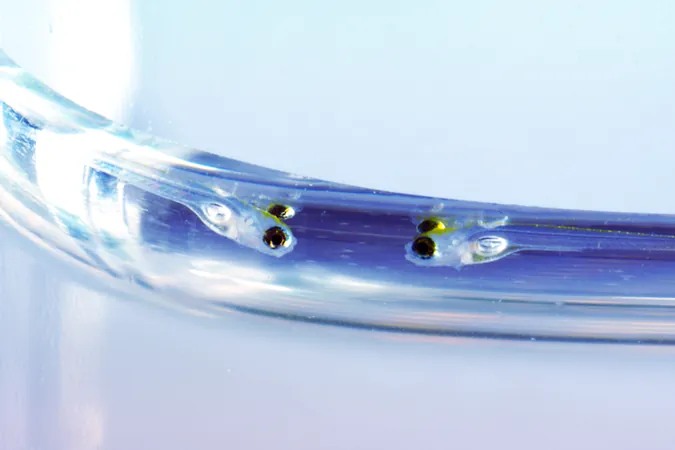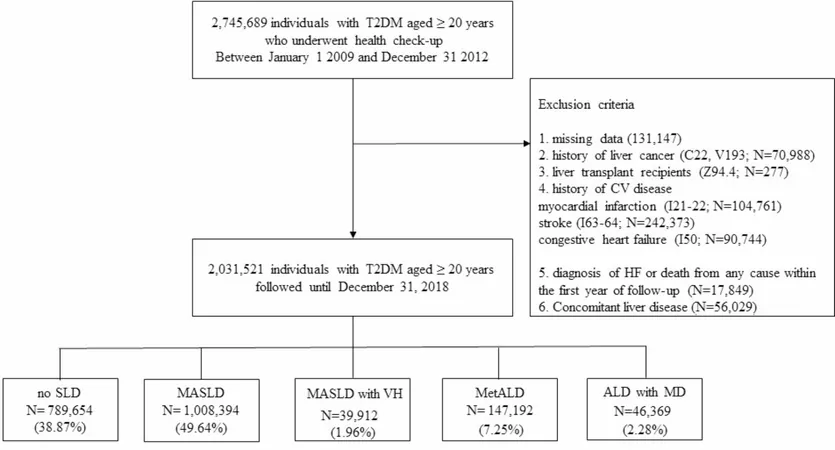
Revolutionary Zebrahub Atlas Unveils Secrets of Zebrafish Development
2024-10-24
Author: Nur
Introduction
Scientists from the Chan Zuckerberg Biohub San Francisco have made a groundbreaking advancement in developmental biology with the introduction of Zebrahub, a cutting-edge atlas that meticulously maps the embryonic growth of zebrafish. This innovative resource harnesses high-resolution time-lapse imaging of zebrafish embryos, revealing the intricate dance of individual cells as they migrate and differentiate into the various tissues of a fully formed adult fish.
Zebrahub: A Game-Changer
Zebrahub is a game-changer, likened to a "Google Earth" for the field of developmental biology, offering an interactive, navigable tool that allows researchers unprecedented access to the events that lead from a single fertilized egg to a complex organism. "Zebrahub provides an extraordinary opportunity to observe cellular behavior during the intricate developmental process," stated Merlin Lange, PhD, a senior scientist at CZ Biohub SF. "This integration of gene expression and spatial cell mapping is a rarity in scientific resources."
Access and Tools
This comprehensive atlas not only presents a detailed visualization of cellular dynamics but is also freely accessible to researchers worldwide, complete with advanced analytical tools tailored for biologists. The creation of Zebrahub involved the development of novel instruments and software, marking a significant leap in our understanding of embryonic development, which the team describes as "ushering in a new era for developmental and evolutionary biology."
Significance of the Work
Loïc Royer, PhD, who leads imaging AI at CZ Biohub SF, emphasized the importance of this work: "Understanding how life transitions from a single cell into a fully formed body is one of biology's greatest mysteries. With Zebrahub, we may have created the most comprehensive map of this journey yet."
Datasets and Methodologies
The atlas details two major datasets that illuminate the early stages of zebrafish development. The first set captures time-lapse video microscopy of cellular movements within the first 24 hours post-fertilization, marking the initial formation of organs. The second dataset focuses on gene expression, analyzing over 120,000 cells across multiple time points in the embryos’ first ten days of life. By employing innovative techniques such as light-sheet microscopy and single-cell RNA sequencing, researchers have crafted a multimodal atlas that interlinks imaging data with gene activity.
DaXi: Advanced Microscopy System
One standout feature of Zebrahub is the automated microscopy system named DaXi, developed specifically for capturing these delicate developmental processes. This advanced light-sheet microscope not only enhances the precision of imaging but also protects the embryos from potentially harmful high-intensity lasers. CZ Biohub software engineer Jordão Bragantini, PhD, further refined the process with Ultrack, a sophisticated program that utilizes deep learning algorithms to track cell nuclei movements in three-dimensional space throughout the videos.
Unexpected Discoveries
Among the unexpected discoveries made possible through Zebrahub was the revelation that neuro-mesodermal progenitors (NMPs), previously thought to generate only one type of tissue, are in fact capable of developing into both muscle cells and neurons—an insight that could reshape our understanding of vertebrate development.
Broader Implications for Research
This ambitious project, five years in the making, is not just a leap forward for studies on zebrafish. With zebrafish being a model organism that shares approximately 70% of its genes with humans and develops outside of the mother, this atlas opens new avenues for research pertinent to human health and developmental disorders.
Open-Source Advancements
Every technological advancement from Zebrahub's creation is open-source, setting the stage for collective growth within the scientific community and enriching our understanding of embryology. Sandra Schmid, PhD, the Chief Science Officer of CZ Biohub SF, attested to the novel approach of funding by the Chan Zuckerberg Initiative, enabling Zebrahub to provide critical data that can drive the next generation of health sciences and AI research.
Ongoing Research Utilization
Research teams are already utilizing Zebrahub's extensive gene expression database for their studies, including investigations into cellular proteins linked to cataract formation in the eye. Mason Posner, PhD, from Ashland University, noted the utility of Zebrahub in clarifying gene activities in complex tissue structures, thereby enhancing our comprehension of biological functions that underpin health conditions.
Conclusion
In conclusion, Zebrahub not only represents a monumental achievement in developmental biology but also lays the groundwork for transformative discoveries in medicine, offering a beacon of hope for future research and potential breakthroughs in understanding life’s most intricate processes. Stay tuned as we unravel more about this exciting frontier!



 Brasil (PT)
Brasil (PT)
 Canada (EN)
Canada (EN)
 Chile (ES)
Chile (ES)
 España (ES)
España (ES)
 France (FR)
France (FR)
 Hong Kong (EN)
Hong Kong (EN)
 Italia (IT)
Italia (IT)
 日本 (JA)
日本 (JA)
 Magyarország (HU)
Magyarország (HU)
 Norge (NO)
Norge (NO)
 Polska (PL)
Polska (PL)
 Schweiz (DE)
Schweiz (DE)
 Singapore (EN)
Singapore (EN)
 Sverige (SV)
Sverige (SV)
 Suomi (FI)
Suomi (FI)
 Türkiye (TR)
Türkiye (TR)